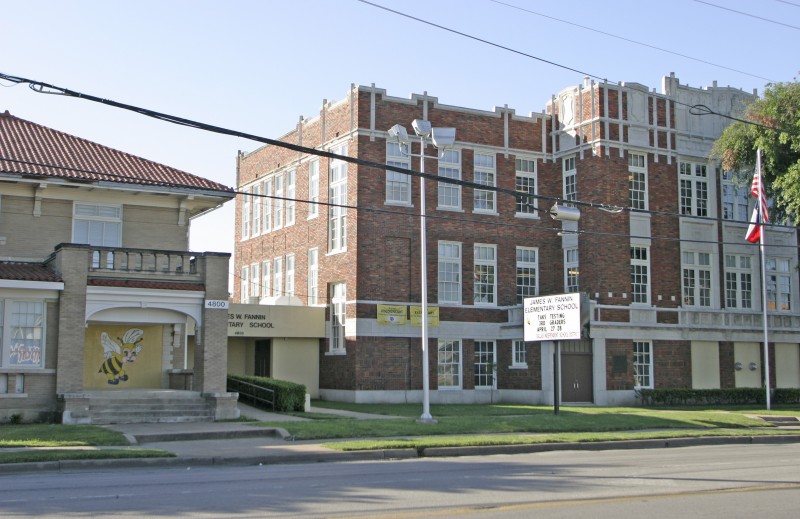School choice, one of the reforms that supporters of Dallas ISD Superintendent Mike Miles rallied around last Friday, is starting to take off district-wide. It began unofficially last fall with the re-launching of Mata Montessori Elementary at La Vista and East Grand, giving neighborhood parents an option in addition to their home school.
Now DISD is rolling out choice schools for middle and high school students, and East Dallas again stands to benefit. James W. Fannin, one of the elementary schools closed in 2012 as part of a cost-saving effort, will reopen for the 2015-16 school year as IDEA High School, starting with 100 freshmen. The school is open to any incoming freshman in the district but will give priority to students within a 3-mile radius. Fannin is on Ross near Fitzhugh, so the priority radius includes quite a bit of our neighborhood.
IDEA (which stands for Innovation, Design and Entrepreneurship Academy) will be a personalized learning school, described as a “one-size-fits-one” approach by Ashley Bryan, DISD’s director of special projects.
“We’re basically looking to move away from desks in rows, teachers doing a lot of direct instruction to all students in the room, and trying to teach to the middle and hoping for the best,” Bryan says.
She says to picture classrooms at IDEA High School looking much like the small group rotation typical to a pre-k or kindergarten classroom — some students working with the teacher, others working together on projects, and others working independently. The new high school will have smaller student-teacher ratios as well as a 1:1 technology ratio, Bryan says.
“Their need for that type of [one-on-one] attention doesn’t change,” Bryan says of high school students. “The difference now is we’re hoping to do more of that application at scale because we can integrate technology to help when a student isn’t working with a teacher.”
Other strategies include pairing students with a mentors starting their freshman year and requiring an internship starting in 10th grade. Already, more than 20 companies have agreed to participate, and the district is looking for others.
“What’s exciting about IDEA is we’re rethinking how teaching and learning happens, especially for high school students,” Bryan says. She references the 2011 book “Now You See It” by Duke University’s Cathy Davidson, which states that “65 percent of children entering grade school this year will end up working in careers that haven’t even been invented yet.”
“We’re preparing kids for a world that, we don’t even know what it looks like,” Bryan says.
IDEA High School will expand by one grade each year as its students progress, ultimately becoming a school of 400 to 500 students, Bryan says. The low enrollment numbers are an intentional part of the school’s approach and could be a strong appeal to neighborhood families; by comparison, Woodrow Wilson and Bryan Adams’ freshman classes currently are 613 and 492 students, respectively. The district is hoping to not just engage students who would otherwise attend their home high schools or one of the district’s magnet high schools but also re-engage families who may be attending private schools.
Interested families can attend one of the many meetings the district has scheduled for eighth-grade parents, including one at J.L. Long Middle School tomorrow, May 5, at 6 p.m. in the auditorium. Parents must turn in application forms by May 15 in order for their students to attend IDEA High School for the 2015-16 school year. If more students opt in than the school has room, students will be selected by randomized computerization. All families will be notified by May 21 and selected families will have until June 4 to accept.






